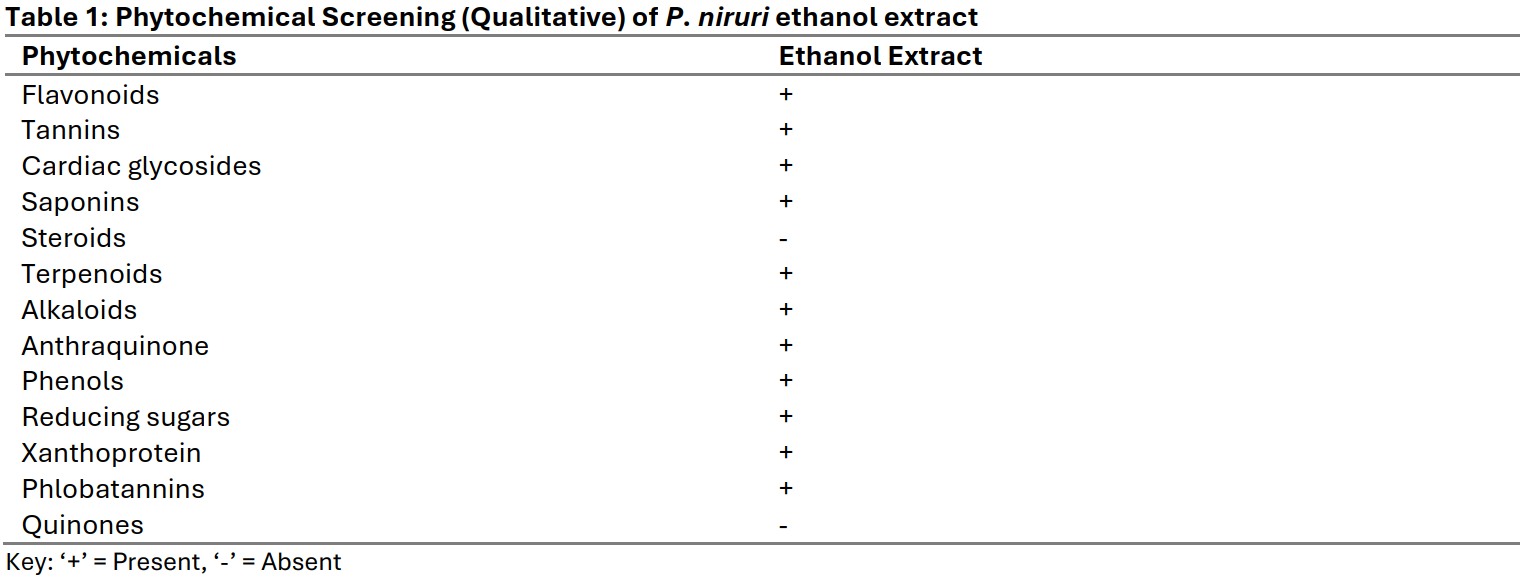Phytochemical and Nutritional Evaluation of Phyllanthus niruri Leaves: Implications for Ethnomedicinal Use
Keywords:
Antioxidants, Ethnomedicine, Phyllanthus niruri, Phytochemical screening, Proximate analysisAbstract
The global resurgence of interest in plant-based therapeutics has intensified scientific efforts toward the identification and validation of medicinal plants as sustainable sources of bioactive compounds. Consequently, a thorough biochemical characterization of such traditional plants is essential to support drug discovery and development. This study investigated the phytochemical composition and proximate profile of the leaves of Phyllanthus niruri (P. niruri), a plant widely recognized in traditional medicine for the management of ailments such as hepatitis, urolithiasis, and diabetes. Fresh P. niruri leaves were extracted using 100% ethanol, and standard analytical procedures were employed for phytochemical and proximate analyses. The phytochemical screening indicated a rich presence of key secondary metabolites, including flavonoids, saponins, tannins, alkaloids, phenols, terpenoids, cardiac glycosides, anthraquinones, and phlobatannins, whereas steroids and quinones were absent. Proximate analysis revealed a high moisture content (39.33 ± 0.48%) and appreciable levels of carbohydrates (31.47 ± 0.58%) and crude fibre (15.26 ± 0.37%), alongside moderate quantities of crude fat (6.60 ± 0.57%), total ash (8.60 ± 0.28%), and crude protein (2.35 ± 0.17%). The abundance of polyphenolic compounds (phenols, tannins, flavonoids) and alkaloids suggests a biochemical basis for the plant’s reported antioxidant, anti-inflammatory, and antiviral activities. Additionally, its considerable fibre and carbohydrate contents indicate potential value as a dietary supplement. Overall, these findings substantiate the ethnopharmacological relevance of P. niruri, reinforcing its potential as a nutraceutical resource and promising candidate for future drug development.

Published
How to Cite
Issue
Section
Copyright (c) 2025 Journal of Science Research and Reviews

This work is licensed under a Creative Commons Attribution-NonCommercial 4.0 International License.
- Attribution — You must give appropriate credit, provide a link to the license, and indicate if changes were made. You may do so in any reasonable manner, but not in any way that suggests the licensor endorses you or your use.
- NonCommercial — You may not use the material for commercial purposes.
- No additional restrictions — You may not apply legal terms or technological measures that legally restrict others from doing anything the license permits.




